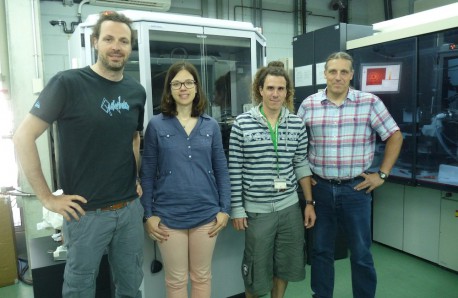X-Ray Diffraction Unit

THE UNIT IN 2013
The X-ray Diffraction Unit gathers all the techniques which are based on the diffraction of X-rays on crystalline solids. In this Unit two principal techniques are available: Powder X-ray Diffraction and Single Crystal X-ray Diffraction.
In 2013 two new techniques or methodologies were introduced in the Unit:
- Variable temperature XR Powder Diffraction experiments within the range from -173ºC and 250ºC.
- The capability of measuring extremely air sensitive crystals using a methodology that implies the selection of the crystal in a glove box and freezing the crystal directly into the measuring loop.
During the year 2013 the Unit was also user of the ALBA synchrotron facility. Proteins beamline (BL13-XALOC) was used to measure very small crystals or very large molecules. Powder diffraction beamiline (BL04-MSPD) was used to quantify and determine detection limits in which fields a great expertise was acquired.
In the year 2013 were measured and solved more than 600 crystals.
The x-Ray Diffraction Unit Staff participated into the “Pharmaceutical Solid State Development Workshop 2013” organized by Crysforma that took place in the ICIQ.
Moreover, two students were hosted during 2013 in the XRD laboratory.
MOST IMPORTANT EQUIPMENT
- Two Single Crystal X-ray diffractometers from Bruker®. One with a rotating anode as radiation source (MoK) and the other with two microfocus sources (MoKaand Cuka)
- Powder X-ray diffractometer from Bruker® (D8 Advance) equipped with a ninety-position auto changer sample stage.
- Microscope: Zeiss® Stemi SV11 Stereomicroscope.